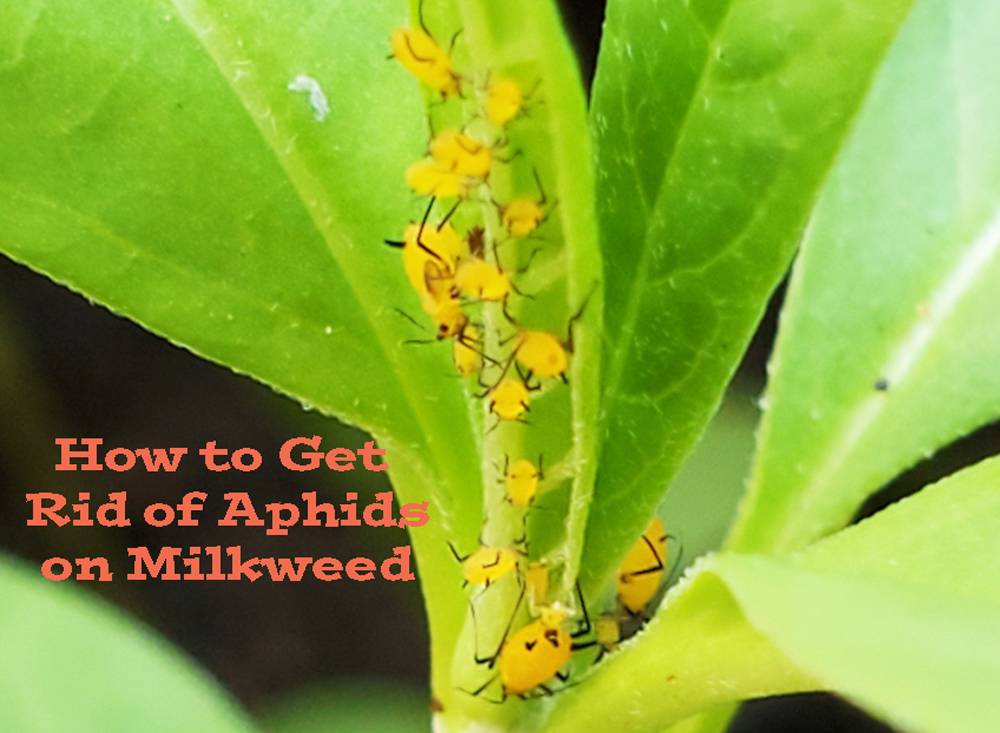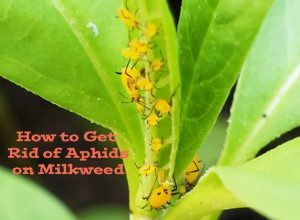
03 Sep How to Rid Your Milkweed of Aphids

I get a lot of calls this time of year from monarch butterfly people concerned about aphids on their milkweed. Aphids show up in my garden every year when the summer gets hot, usually early August, and they can continue thru Sept. I use a garden hose and my fingers to remove EVERY SINGLE APHID I can find – under leaves, in between new leaves, around flower stems and on seed pods. When I squirt them off every day for a week, they are GONE!
CRITICAL! Do NOT use any kind of pesticide, systemic or insecticidal soap. It will KILL YOUR CATERPILLARS.
Here’s a good article from University of Maryland Extension that says similar:
https://extension.umd.edu/hgic/topics/aphids-got-your-milkweeds#:~:text=Aphids%20Got%20your%20Milkweeds%201%20Wait%20for%20beneficial,are%20attracted%20to%20plants%20with%20higher%20nitrogen%20content
How To Get Rid of Aphids on Milkweed
Save your milkweed from being drained of vitality by aphid infestation by following these tips for removal.
These quarter inch-long garden pests have soft pear-shaped bodies in various shades of white, black, yellow, green, brown, or red. They feed on the plant’s sap and literally suck the life out of leaves, stems, buds, flowers, fruit, and roots.
Aphids reproduce so quickly—we’re talking several generations created in a single season—that by the time you notice the insects on your milkweed, you’re likely in the midst of a full-blown infestation. Thankfully, though, you CAN combat the pests before major damage occurs AND without the use of any pesticide or systemic which will kill your monarch caterpillars!
STEP 1: Removal
If you discover aphids on your milkweed:
Hose the milkweed down.
If you spot a few aphids on your plants, the minor infestation can be successfully banished with a strong stream of water from the hose, assisting with your fingers to brush the aphids off. Spray water all over the plant, and especially target the underside of each leaf, in and around the flowers, and all the new leaves. Be aware, aphids can be on the underside of ANY leaf, so check them all as well as the stems. Repeat this process every day to every other day for at least a week, and you will likely succeed at eliminating all the aphids.
Do NOT spray plants with DIY insecticidal soap, use a systemic pesticide or spray your milkweed with any other pesticide. It will poison and kill your caterpillars.
STEP 2: Prevention
After eradicating aphids from your garden, you can help prevent the pests from returning. Here are three ways to deter aphids from your plants.
Introduce beneficial bugs.
Ladybug beetles eat aphids. Do NOT introduce parasitic wasps, though they eat aphids, they also eat monarch caterpillars!
If you plant a flowering ground cover like cosmos and stonecrop that supply nectar throughout the growing season, you’ll draw ladybugs to the garden and successfully keep the aphid population in check.
Choose helpful neighbor plants.
Oregano, chive, sage, garlic, leeks, onions, and other plants with strong scents can deter aphids. Plant these in the areas of your garden where aphids have been a problem. In addition, you can grow plants that attract aphids, like calendula and nasturtium, on the opposite side of your property; they may draw aphids away from the affected area. Companion planting is a natural, long-term prevention measure, but it could help your aphid population diminish significantly over several seasons
